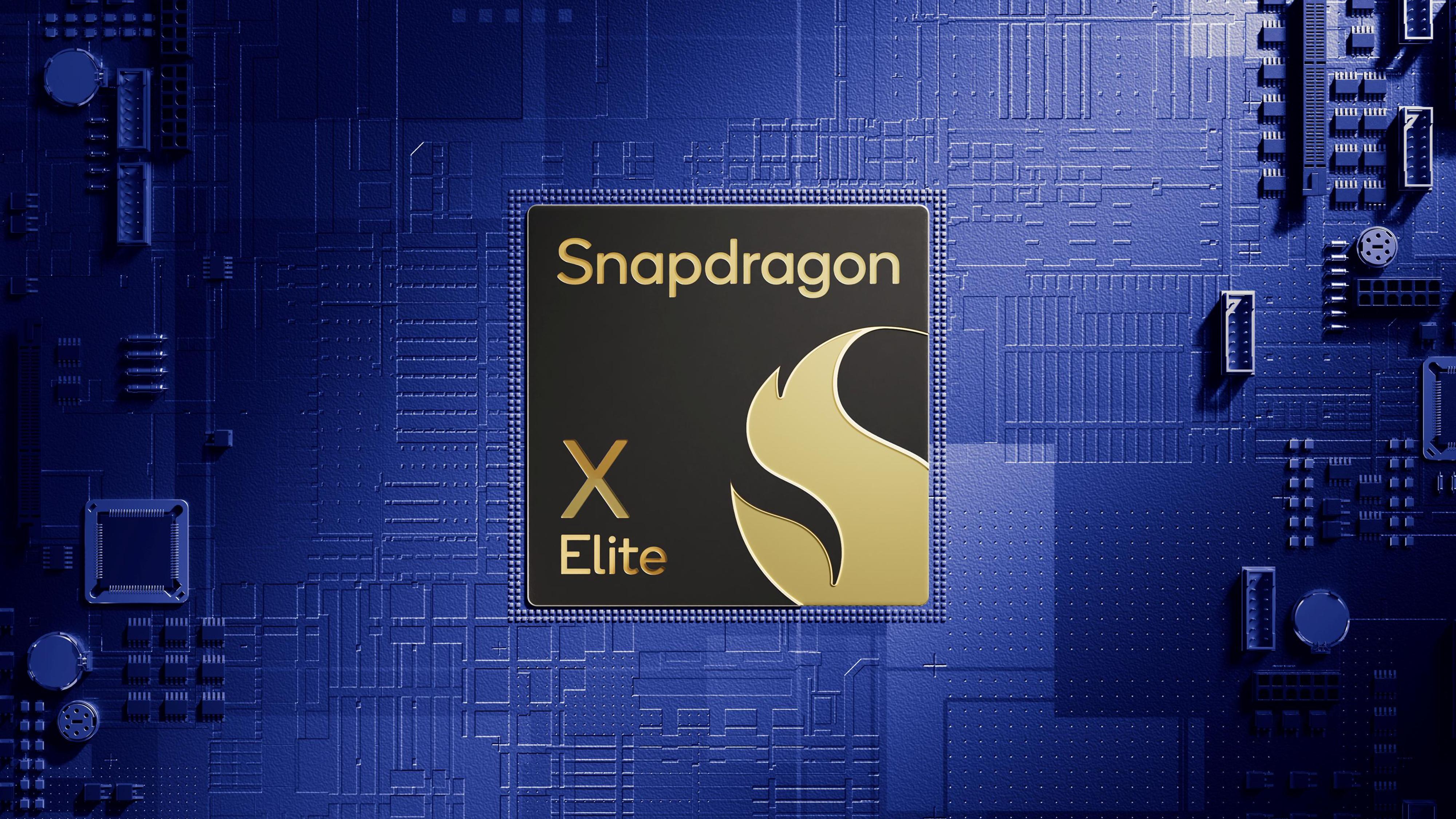Qualcomm CEO expected to save $1.4 billion in Arm royalties by purchasing Nuvia, assumed Snapdragon X chips would be a massive hit
That's a lot of money Arm could have lost out on, were Qualcomm to take the laptop market by storm.

Qualcomm CEO Christiano Amon told the company board that purchasing Nuvia outright would save it as much as $1.4 billion per year in payments to Arm. This admission was revealed during the Arm vs. Qualcomm trial, where the former claimed that the Snapdragon X chips the latter released earlier this year were infringing on its patents. According to Reuters, Amon testified that he used this reason to justify the acquisition of Nuvia, which cost Qualcomm $1.4 billion in 2021.
Qualcomm owned a huge share of the smartphone processor market in the late 2010s, yet the company believed it was falling behind Apple’s Bionic chips in terms of performance due to its reliance on Arm designs. Aside from that, Amon wanted to take on Intel’s dominance in laptops and mobile computing. But Qualcomm had no alternative to Arm at that time.
When former Apple engineers who worked on smartphone processors founded Nuvia in 2019, the Qualcomm CEO saw a solution. At first, Amon tried to convince Nuvia to build computing cores for the company. When that failed, he decided that the next best thing was to simply buy the startup.
This strategy was reportedly a tough sell to the Qualcomm board, especially as Nuvia didn’t have a product at that time and was mostly focused on developing chips for servers. So, to acquire the talent and designs that Nuvia had, Amon told the company board that this move would potentially save Qualcomm $1.4 billion yearly in royalties to Arm. This theoretical number was based on the assumption that Qualcomm’s Snapdragon X processors would take a massive chunk of the laptop market at its launch. In reality, Qualcomm sold only 720,000 units in the first full quarter it went on sale; barely 0.8% of the entire market.
Arm argues that it is missing out on $50 million in annual revenue because Qualcomm failed to renegotiate its contract with the company after it acquired Nuvia. Arm reasons that Qualcomm should destroy all Nuvia designs that were built before its acquisition. On the other hand, Qualcomm asserts that its architecture license agreement with Arm fully covers everything it acquired under Nuvia and that Arm is only making this move because it plans to design its own chips in competition with its clients, including Qualcomm.
Arm is understandably aggressively defending its technology, as its core business relies on licensing agreements. If Qualcomm could save at least $50 million annually because of its Nuvia purchase, other Arm clients could potentially copy this move, severely threatening Arm’s business model. Still, there’s no guarantee which side the court will take. Closing arguments for the case are happening today, so both Arm and Qualcomm are holding their breath for the future of Snapdragon X.
Get Tom's Hardware's best news and in-depth reviews, straight to your inbox.

Jowi Morales is a tech enthusiast with years of experience working in the industry. He’s been writing with several tech publications since 2021, where he’s been interested in tech hardware and consumer electronics.
-
A Stoner The new processors are significantly better than any ARM processors that Qualcomm has access to, and the answer is not that ARM wants to get paid the royalties it thinks it is owed, but instead wants the technology destroyed. That is the story that needs to be taken away from this lawsuit, and where the judge and or jury should be looking at to see which side to support in their findings.Reply
These designs do not infringe on ARM patents. Their argument is that they should get higher royalties for them. But their solution is to destroy technology instead. -
bit_user Reply
If it were easy to make competitive cores, sure.The article said:If Qualcomm could save at least $50 million annually because of its Nuvia purchase, other Arm clients could potentially copy this move
This isn't the first time Qualcomm designed its own cores. As recently as the Snapdragon 820, they had their own fully-custom cores and they weren't bad. This is one of the reasons Qualcomm had an architecture license, BTW. However, they struggled to keep up with ARM's cores and so Qualcomm switched over to merely tweaking ARM's designs, starting with the Snapdragon 830.
Nuvia was sort of a unicorn, because you had an experienced CPU design team that was intimately familiar with the architecture and knew exactly how to build competitive mobile cores. That sort of thing only happens like once per decade, with the last time probably being when Apple bought PA Semi (which was building PowerPC cores, not ARM cores, but still aimed at laptops).
Samsung also used to have its own custom ARM cores. But, like Qualcomm, they struggled to compete with ARM's. So, about 5 years ago, Samsung killed off that group and switched to simply licensing ARM's IP. -
cyrusfox tricky... from what I can tell and what I understand, does appear Qualcomm is being deceptive and attempting to avoid royalties that on the surface are due. Perhaps what they are doing is legal, but I would not call it ethical.Reply
The part about destroying technology, well if it based on ARM IP, you can understand where ARM is coming form, good luck to the courts, no confidence they get it right though. Maybe it would have been best for all if Nvidia was allowed to acquire ARM... -
ezst036 Reply
This is what makes the whole proposal so absurd though. The actual destruction of the blueprints/design. Even if Qualcomm has to fully end production/use of ARM altogether, that technology is very valuable. Qualcomm will never destroy it. Just sell it to someone else.A Stoner said:The new processors are significantly better than any ARM processors that Qualcomm has access to, and the answer is not that ARM wants to get paid the royalties it thinks it is owed, but instead wants the technology destroyed. That is the story that needs to be taken away from this lawsuit, and where the judge and or jury should be looking at to see which side to support in their findings.
These designs do not infringe on ARM patents. Their argument is that they should get higher royalties for them. But their solution is to destroy technology instead.
A part of me thinks this is ARM Holdings' way of shifting the Overton Window. They never actually want Qualcomm to destroy the design this whole time, but by making such a radical request,
"Oh hey, why don't you just make this reasonable request instead and give us $1.4 billion dollars, which is what the licensing fees would amount to anyways. Isn't that so much better?"
They are attempting to make their real goal this whole time seem much more reasonable.
What ARM Holdings doesn't seem to realize though is that by making the demand for design destruction, they as licensor are doing significant damage to their own brand. Who would want to license from this organization that either makes these sorts of demands or plays these sorts of gimmicky games when RISC-V is freely available?
If you're trying to make inroads on phones, ok, you gotta go ARM for now. That's how the entire software stack is built. But on desktops, laptops, or servers, it's wide open as to what technology will come out ahead of x86. It's not yet a lock that ARM will be the new standard. -
KraakBal To me it looks like ARM is butthurt about not having any licenceable designs to compete with and emulate x86.Reply
They should have been working on these instead of sitting on their laurels in the 2010s -
bit_user Reply
Why do you think that would've changed anything, here?cyrusfox said:Maybe it would have been best for all if Nvidia was allowed to acquire ARM... -
bit_user Reply
Oh, I'm sure they know. It could even be RISC-V that's motivating their behavior. They might see the days of AArch64 as limited either way, and are simply pursuing a revenue-maximizing strategy that more than makes up for shortening the transition point by disproportionately increasing revenues until then. It is risky, though.ezst036 said:What ARM Holdings doesn't seem to realize though is that by making the demand for design destruction, they as licensor are doing significant damage to their own brand. Who would want to license from this organization that either makes these sorts of demands or plays these sorts of gimmicky games when RISC-V is freely available?
Also, the only ones who really have to worry are those with architectural licenses. Most ARM customers are using ARM's cores, and thus not affected by disputes involving architecture licenses. The main exception to that is Apple, but I think I heard their architecture license is locked-in until like 2040. AMD and Nvidia reportedly also have architecture licenses, but I'm not sure when they're up. I think I heard something about Nvidia's getting extended before it put in its offer to acquire ARM.
I think Android also supports RISC-V, now. There are some 3rd party native apps that would have to get ported, but most apps are JIT-compiled and run on all Android platforms.ezst036 said:If you're trying to make inroads on phones, ok, you gotta go ARM for now. That's how the entire software stack is built.
Eh, servers have really gone pretty decidedly for ARM. RISC-V could ultimately win out, but not before ARM has even more growth in that market.ezst036 said:But on desktops, laptops, or servers, it's wide open as to what technology will come out ahead of x86. It's not yet a lock that ARM will be the new standard. -
dCasualGamer Replybit_user said:Nuvia was sort of a unicorn, because you had an experienced CPU design team that was intimately familiar with the architecture and knew exactly how to build competitive mobile cores. That sort of thing only happens like once per decade, with the last time probably being when Apple bought PA Semi (which was building PowerPC cores, not ARM cores, but still aimed at laptops).
Basically ARM just want to protect its own business model, its cash cow of licensing ARM instruction set. Whether the new chip design is better or competitive is beside the point. If Qualcomm is allowed to do this maneuver, then many in the industry will think of ways to do the same. Bunch of lawyers with fancy suits will find new ways to circumvent ARM's licensing contracts.
I guess the punishment has to be severe enough to deter future breach of contract. What is a million dollar fines if the resulting benefit is in the billionsezst036 said:This is what makes the whole proposal so absurd though. The actual destruction of the blueprints/design. Even if Qualcomm has to fully end production/use of ARM altogether, that technology is very valuable. Qualcomm will never destroy it. Just sell it to someone else.